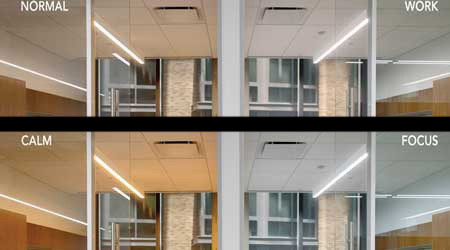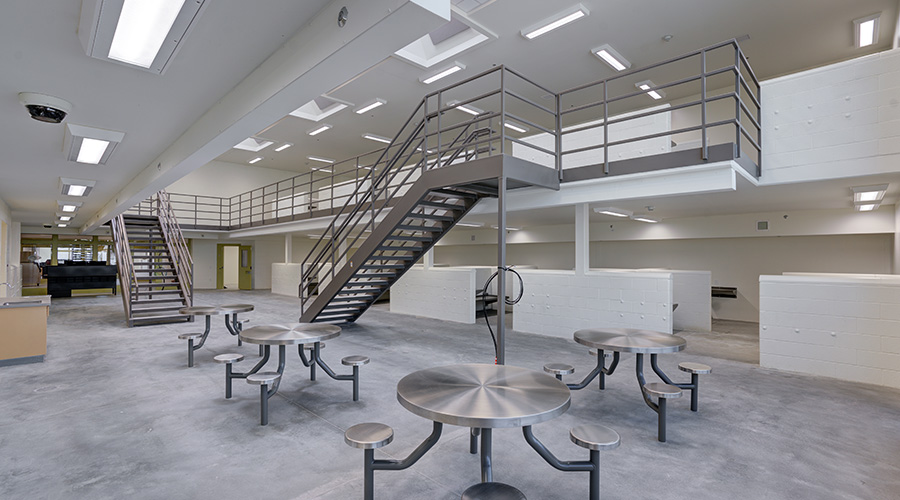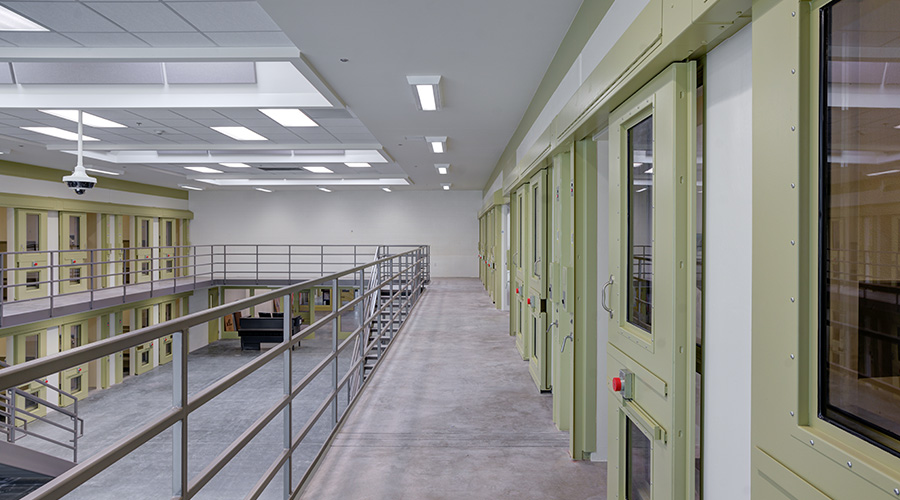 When Michael Best LLC relocated its Washington, D.C., office, the firm identified tunable-white lighting as a highly desirable office lighting feature. The system allowed occupants to select one of four presets in key spaces: “Focus” (5000K), “Work” (4200K), “Normal” (3500K), and “Calm” (2700K), supporting different uses of the spaces.
When Michael Best LLC relocated its Washington, D.C., office, the firm identified tunable-white lighting as a highly desirable office lighting feature. The system allowed occupants to select one of four presets in key spaces: “Focus” (5000K), “Work” (4200K), “Normal” (3500K), and “Calm” (2700K), supporting different uses of the spaces. Should You Give Tunable White LED Lighting a Shot?
Tunable white LED lighting can offer energy savings, as well as the chance to optimize the utility of your lighting system. Here's what you need to know.
Tunable white LED lighting has emerged as an exciting option for building owners and facility managers looking not only to minimize energy consumption but also optimize the utility of their lighting systems. This flexible approach to lighting produces an amenity that can make a real difference in visual perception of people, objects, finishes, and spaces.
So what is tunable white lighting? Simply, it is lighting that can be adjusted in terms of both intensity (light output) and color appearance (think warm morning to cool afternoon) white light output. This enables both light level and shade of white light to be changed manually or dynamically for function, mood, or preference. Applications include circadian-friendly lighting, activity signaling in classrooms, adapting the lighting to properly visually render a fresh interior design, calibrating color across spaces, blending electric light and daylighting, and more.
Let’s start with some background: Light is actually made up of colors, or rather wavelengths associated with colors. A rainbow — white light refracted into its constituent colors — is a common illustration of this concept. The primary colors are red, green, and blue. Combined, they form white light and the basis of color perception. Relative concentration of wavelengths characterizes the color or shade of white light emitted by a light source.
White light color perception is typically expressed as correlated color temperature (CCT), which describes the hue of a light source and its emission compared to an idealized blackbody radiator. Light sources may be characterized as visually warm (less than 3000K CCT, peach-white) to neutral (3500K to 4000K, white) to cool (greater than 4000K, bluish-white). In traditional lighting, a typical incandescent lamp would be considered warm, while most linear fluorescents are cool. These shades of white emphasize certain colors in the space and characterize the color appearance of the light, which we associate with different moods — warm for intimacy and relaxation, cooler for work and learning.
With traditional lighting, color choices were fixed based on the lamps purchased, unless one changed them to a different CCT value or added a color filter. With LEDs, we gain the relatively easy capability of dynamically producing virtually any color, including any shade of white light. CCT is adjusted through the interaction between LEDs and dimming controls, which combine for what we call tunable-white lighting.
Color tuning with LEDs
With LEDs, there are three primary choices of color-tunable products:
1. Full-color-tunable. These LED products produce a multitude of saturated colors, ideal for architainment and similar applications. Though they are capable of producing white light, adoption in general lighting has been limited.
2. Dim-to-warm. These products automatically reduce white-light CCT to a visually warm color appearance during dimming, similar to an incandescent lamp. This provides a quick and easy option where an LED lamp is selected for its energy savings and performance, but incandescent-like dimming is desired.
3. Tunable white. These products allow manual or automatic adjustment of CCT across a defined range from warm to cool. Typically implemented with luminaires (light fixtures), this option is common in general lighting and accent lighting.
With tunable white lighting, the mechanism for CCT adjustment is fairly simple in principle. Controllable arrays are produced with two or more groups of warm- and cool-white phosphor-coated LEDs on the board. By dimming each group relative to the other, the luminaire’s CCT can be adjusted anywhere between the minimum and maximum LED values. Meanwhile, intensity can also be controlled. Additional primaries (color LEDs) can be added to enhance color spectrum and support color rendering. The product may also dim to warm as an additional feature.
There are two approaches to achieving tunable white operation. The simplest is to use a warm-cool gamut. The relative dimming of the warm- and cool-white LEDs produces a range of CCTs that may be wide (e.g., 2700K to 6500K) or narrow (e.g., 3000K to 5000K). A more sophisticated approach uses a triangular/area gamut, where the warm and cool primaries are supplemented with one or more colors controlled using response algorithms. Instead of a straight line between the two primaries, a more triangular range is achievable, which allows the luminaire to better follow the curvature of white light along the blackbody curve and therefore achieve a higher degree of color control accuracy, along with the ability to produce additional colors.
Tunable white lighting is typically installed with a driver (which functions in an LED luminaire similarly to a fluorescent ballast) that may feature a color-mixing lighting controller, enabling both color and light output control. Input devices control color and light output by communicating via an analog 0-10V signal, a digital wired protocol, or digital wireless protocol. A wide variety of interfaces is available, similar to what’s available for fixed-output lighting control. These range from programmed software control profiles in an intelligent networked control system to manual sliders and pushbuttons, touchscreens, and mobile apps.
Related Topics:














